
Jun 16 2020.
views 1220Sri Lanka has a proud history of being a highly literate country with a respected library service that served its citizens for centuries. as of 2018, Sri Lanka’s literacy rate lies at 91.71%. The remaining 8.29% cannot read or write thereby depriving them of their right to pursue formal education and further their knowledge. Therefore, for those who cannot read, a window of opportunities has long been shut, whereas, for those who can read, library services have evolved.
Significant libraries in Sri Lanka
The oldest library in Sri Lanka is the Government Oriental Library (1870) which was incorporated into the Colombo National Museum Library. For the past 150 years, it has served as the nucleus of the library by collecting local publications. While it has been functioning as an unofficial national library it is also the first Legal Deposit on the island. Some of its special collections include the private collection of late H.C.P Bell, private collection of Palm Leaf Manuscripts of Dr. W. A. De Silva, Henry Blake’s collection of Palm Leaf manuscripts donated by Sir Solomon Dias Bandaranayake among others.
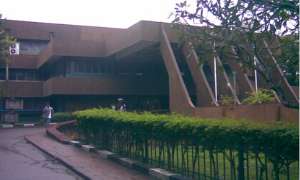
Image: The Colombo Public Library
On May 31, 1981, the Jaffna Public Library went up in flames, reducing over 97,000 volumes of publications and more than 10,000 of the rarest collections in the world to ashes within a matter of hours. The Jaffna Library started as a private collection of scholar K. M Chellapha where he used to lend books from home. As a result, a local committee was formed with Chellapha as its secretary, and a formal Library was set up. The establishment was opened in 1959 by the then-Mayor Alfred Duraiappah. The Library rose to prominence as it housed documents of invaluable worth including the only copy of Yalpanam Vaipavam – a history of Jaffna written by Tamil poet Mayilvagana Pulavar in 1730.
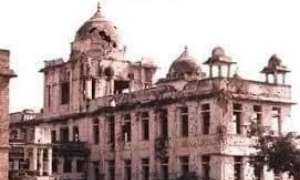
Image: A burnt Jaffna Library
The destruction of the library was harshly criticized by Sri Lankan librarian and bibliographer H.A.I Goonetileke at the time. In an emotional private letter, he wrote: “The gutted building is a grim testimonial to savage and bestial tendencies of communal hate. Complete destruction by an act of calculated and cold-blooded vandalism of the Jaffna Public Library is the most wounding to the sensibility of our brethren in the North and must outrage the humane feelings of every person in the land, whatever his political, racial or religious persuasion.”
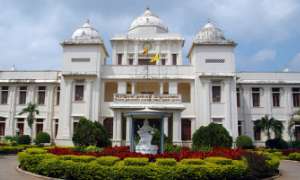
Image: Jaffna Library as seen today
Like a phoenix that rose from its ashes, today, the pristine white structure elegantly stands behind a statue of Goddess Sarasvathi at the heart of Jaffna although much of its worth has been sacrificed to the past.
The Ishvari Corea legacy
The evolution of library services in Sri Lanka wouldn’t have been a reality if not for visionary public servants such as Ishvari Corea. With a Postgraduate qualification in Librarianship from the University of London, she was appointed as the Chief Librarian of the Colombo Public Library in 1961 which many recall as a landmark event in the history of library services in Sri Lanka.
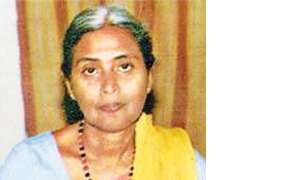
Image: Ishvari Corea
Following her appointment, she was instrumental in expanding the services of the public library to several branch libraries in the city and a mobile library that benefitted children in underserved settlements. She then decided to move the Library from its previous location to the current location and further expand services to inaugurate an Audio-Visual section, a Braille library providing free membership, a Food and Agriculture Organisation Depository Library and the Box Library project sponsored by UNICEF for children in low-income families. She served in this position for 27 years. She also served as the President of the Sri Lanka Library Association (SLLA), the professional forum for Sri Lankan librarians from 1967 to 1968. After retiring from the Public Library, Mrs. Corea was appointed as the President of the National Library and Documentation Services Board (NLDSB) from 1989 to 1994. The NLDSB helps maintain all state libraries in the country and was established under NLDSB Act No. 51 of 1998.
Breaking traditions
Libraries have certainly evolved to give a better experience for passionate readers. A good book and a coffee is a match made in heaven and libraries have evolved to make way to the library café concept. Echoing her sentiments on revamping libraries, Dr. Nayana Wijayasundara, SLLA President and chief librarian at Sri Jayawardenapura University (USJP) said that a library has much more to offer to readers than just reading. “We have introduced a variety of e-resources to make it a better experience for readers. By integrating information services and e-learning platforms it makes things more convenient for those who utilize the services.”
Drawing an example, Dr. Wijayasundara spoke about the USJP library which has done away with library cards and how every student has a reference ID with a barcode. “They have a coffee machine where students can purchase coffee or tea at a nominal fee, they can pay utility bills and even borrow laptops through its laptop lending service.”
Entering the digital age
“There are around 1180 national libraries around the country,” said W. Sunil, NLDSB Director General. “These libraries come under the purview of respective local government bodies. Therefore some of them come under the purview of Municipal Councils and others under Pradeshiya Sabhas.”
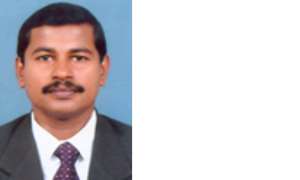
Image: W. Sunil
However, in moving with current trends much has been done to upgrade systems. “The www.kiyawamu.lkportal has over 1500 books in Sinhala and Tamil languages. English books could be accessed via www.amazon.com. In future people will opt to read e-books due to safety precautions that need to be taken. We have a National digital library where most books have been uploaded. There’s a collection of gazettes and ancient manuscripts as well. However, some authors don’t like to have their books in e-versions since they don’t get paid for purchases. Without their consent, we don’t add their books either.”
A potential career option
Those interested in library services can sit for the Diploma in Library and Information Science offered by the Sri Lanka Library Association. The three-year course guides students to become librarians and take up similar job positions in library services. “The first year is a Diploma followed by parts II and III in second and third years,” said Dr. Champa Alahakoon, Education Officer at SLLA. “After following the course, Diploma holders can further study the subject at the Open University and do a Bachelor of Arts in Library and Information Science. But if they join the University of Kelaniya they can study up to Ph.D. level in the same field of study.”
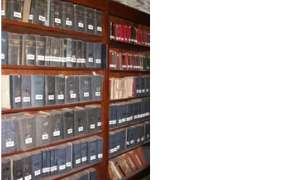
Image: Collections of books at the National Museum Library. Image courtesy - Department of National Museums
Dr. Alahakoon further said that the Diploma includes everything from librarianship to organisation of information, cataloging and classification, library resources and services, office and library management, information and communication technology, and practical modules. When asked if the younger generation is interested in studying this field she said that more than 250 students register annually. “We have six centres.”
Favourite books
We all have a favourite book or books that we read in our childhood. Many of them have been read and re-read over the years, so much so that some characters and dialogues are ingrained in our memories. From Enid Blyton to Martin Wickramasinghe, one can certainly write long lists of favourite authors. Hence we asked a few people what their favourite childhood book was and what’s the oldest book they own and here’s what they had to say :
Madol Duva. I still have the book I read when I was 8. I have read it so many times that I can even remember each and every dialogue and I never get bored reading that. Despite being a children’s novel, this is a must read for all ages.”
Rivisha Siriwardene
Famous Five - taught me about friendship, the importance of going on adventures, and developed my sense of curiosity to investigate.”
Aritha Wickramasinghe
Enid Blyton’s books transported me to a fascinating world of mystery, great food, and imagination.
I still think of some of those characters and grin to myself. To name a favourite book would be tough as I did love all the books I read and still do. I loved mystery, suspense, and adventure. Therefore Secret Seven, Famous Five, Nancy Drew series, etc were great addictions. Tintin always seemed so nice with all the stuff happening inside a ship. I am glad I had books for company as a kid instead of the electronic devices we now have.”
Janice Corea
The Giving Tree. It has a beautiful story and theme about how the environment keeps giving and giving to us without a single complaint.”
Insiya Haveliwala
Heidi !! I loved it and now my daughter loves it and dreams of visiting Heidi’s village. I was also an Archie comic fan.”
Milani Salpitikorala
The oldest book that I have is Eagle in the Sky by Wilbur Smith. The book was my father’s and later on got it along with another lot of books which my father owned as a gift.”
Mohamed Rehan
I will never forget the Twins at St.Clares which actually belonged to my mum. That is probably the oldest book I own too. It’s probably close to 50 years old.
Nishu Gunawardena
0 Comments